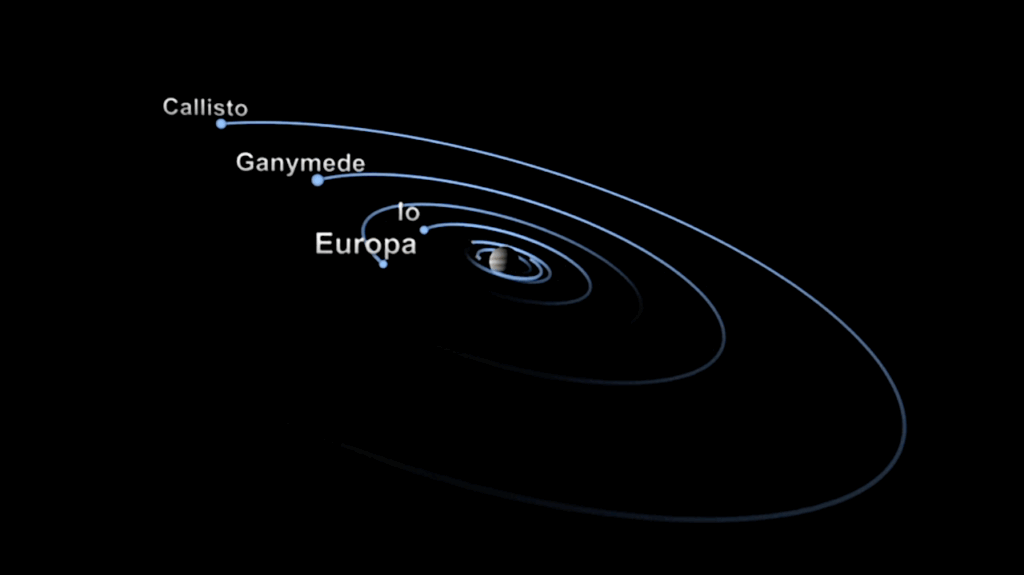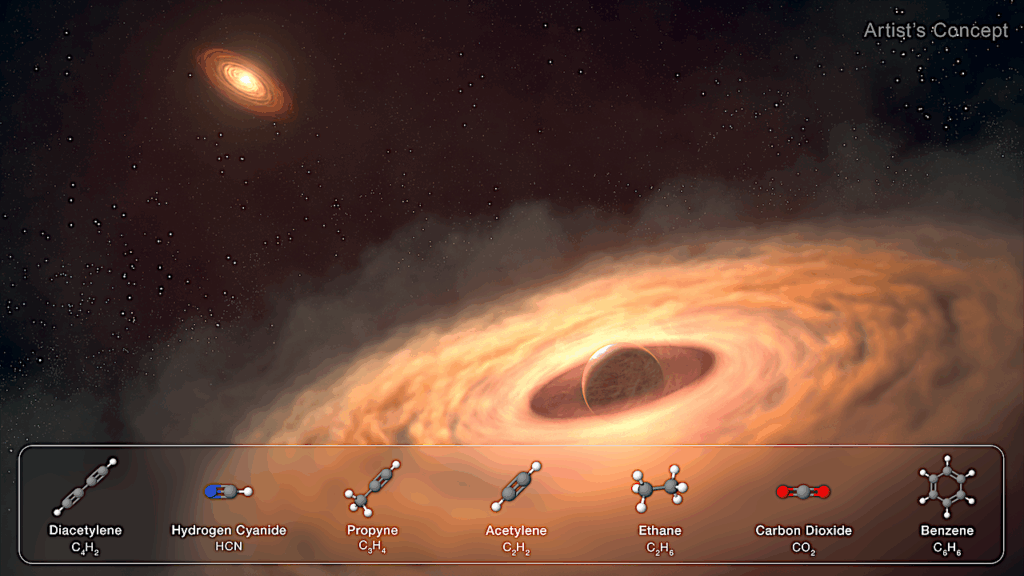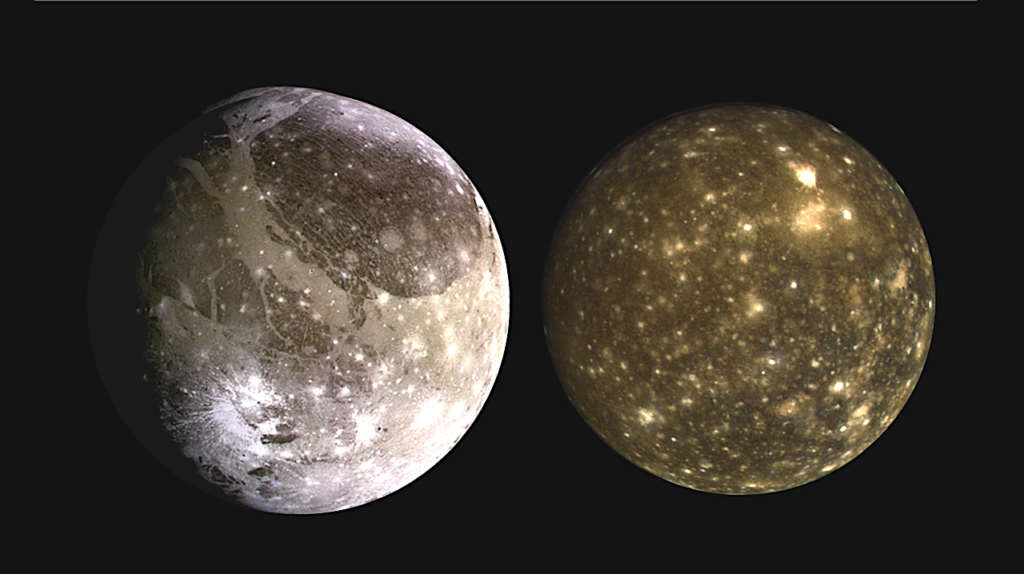Juice Spacecraft Makes Earth-Moon Flyby On Its Astrobiology-Themed Mission

On 17 November 2023, ESA’s Juice spacecraft carried out one of the largest and most important manoeuvres in its eight-year journey to Jupiter.
Using its main engine, Juice changed its orbit around the Sun to put itself on the correct trajectory for next summer’s Earth-Moon double gravity assist – the first of its kind.
The manoeuvre lasted 43 minutes and burned almost 10% of the spacecraft’s entire fuel reserve. It’s the first part of a two-part manoeuvre that could mark the final time that Juice’s main engine is used until its arrival in the Jupiter system in 2031.
Mission to Jupiter picks up speed
ESA’s Jupiter Icy Moons Explorer (Juice) launched from Europe’s spaceport in French Guiana on 14 April 2023.
It’s on a mission to make detailed observations of the giant gas planet and its three large, ocean-bearing moons – Ganymede, Callisto and Europa.
But Juice won’t begin its investigations into the nature and possible habitability of the Jupiter system until its arrival in 2031.
Why does it take so long to get to Jupiter? Well, the short answer is that its less to do with the distance between Earth and Jupiter and more to do with fighting the Sun’s massive gravitational pull as you venture outwards through the Solar System.
Missions to the giant gas planets, such as Juice, Europa Clipper, Galileo or Juno, would be little more than giant fuel tanks if they had to store all the energy needed to overcome the Sun’s gravity by themselves.
Instead, they make use of ‘gravity-assist’ or ‘flyby’ manoeuvres to gain energy by swinging through the strong gravitational fields of various planets on the way.
Shooting for the Moon
Juice’s first boost will come from its home planet, when it returns to Earth in August 2024, more than one year after launch.
In fact, in a first-of-its-kind flyby, Juice will first pass by the Moon to give it an extra kick and make the flyby of Earth that takes place 1.5 days later even more effective.
But even with this extra boost, to get the most out of the gravity assist, Juice has to arrive at the Earth-Moon system at precisely the correct time, at the correct speed and travelling in the correct direction.
That’s where today’s manoeuvre comes in.
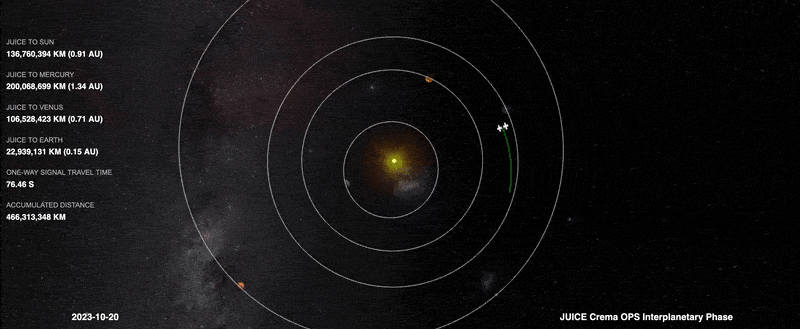
On 17 November, at 16:10 (CET), Juice’s main engine performed a burn that lasted roughly 43 minutes.
“This manoeuvre used up roughly 363 kg of fuel – or almost exactly 10% of the 3650kg of fuel that Juice launched with,” says Julia Schwartz, Flight Dynamics Engineer at ESA’s ESOC mission control centre in Germany.
This is Juice’s largest manoeuvre so far. Until today, Juice had only used roughly 10 kg of fuel – mostly as part of a series of short burns used to help free its stuck RIME antenna.
“It was the first part of a two-part manoeuvre to put Juice on the correct trajectory for next summer’s encounter with Earth and the Moon. This first burn did 95% of the work, changing Juice’s velocity by almost 200 m/s,” adds Julia.
“Juice is one of the heaviest interplanetary spacecraft ever launched, with a total mass of around 6000 kg, so it took a lot of force and a lot of fuel to achieve this.”
“In a few weeks, once we’ve analysed Juice’s new orbit, we will carry out the second, much smaller second part of the manoeuvre. Splitting the manoeuvre into two parts allows us to use the second firing of the engine to iron out any inaccuracies of the first.”
An additional, much smaller manoeuvre using Juice’s smaller thrusters may be carried out in May 2024 for the final fine tuning during the approach to Earth.
Last use of the main engine until 2031
For a mission on an eight-year journey, burning 10% of your fuel reserve in just 43 minutes may seem crazy. But investing all that fuel now will pay off for years to come.
“If all goes well with both parts of this manoeuvre, we likely won’t need to use the main engine again until we enter orbit around Jupiter in 2031,” says Ignacio Tanco, Juice Spacecraft Operations Manager. “For small trajectory corrections between now and then, we will use Juice’s smaller thrusters.”
But that doesn’t mean nothing interesting will happen between now and Juice’s arrival at Jupiter. Quite the opposite, the journey is interesting because it allows Juice to get all the way to Jupiter without firing of its main engine again, reducing the amount of fuel the spacecraft needs and allowing it to be packed full of scientific instruments.
After the Earth-Moon double flyby of 2024 (knows as a Lunar-Earth Gravity Assist; LEGA), Juice will first make one flyby of Venus in 2025 and two further flybys of Earth in 2026 and 2029 (both without the additional boost from the Moon).
“Today’s manoeuvre will ensure Juice arrives at the Earth-Moon system at the right time next year for the double flyby,” adds Ignacio.
“And, thanks to the clever trajectory designed by our Mission Analysis team, that flyby will line it up almost perfectly for all of the others, without us having to fire the main engine again.”
With each flyby, the spacecraft will gain more energy than could be achieved by burning a reasonable amount of fuel – energy that will help it climb towards Jupiter against the pull of the Sun’s gravity.
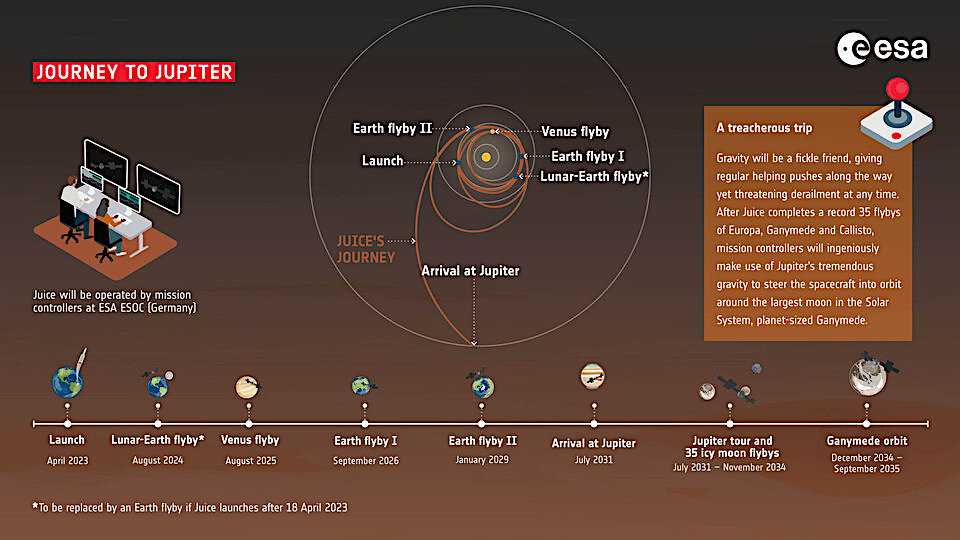
Juice’s journey to Jupiter
“It was very important that we carry out this manoeuvre today. Otherwise, the cost – how much fuel we would need to burn to reach the new orbit we need – would begin to shoot up dramatically,” says Ignacio.
Today’s burn also gave the teams the opportunity to make sure Juice’s main engine is working correctly. It was first tested shortly after launch, but it until today, it hadn’t been used for such a big manoeuvre out in deep space.
“There were some things that we couldn’t test before now. For example, we only had an estimate for how the liquid in the fuel tanks will move around as the spacecraft accelerates. This is very important to know precisely, because if the fuel behaves different to how we expect, it could cause the spacecraft to drift off course during the burn. So, we are monitoring closely.”
Next stop: Jupiter!
The next time that Juice will absolutely have to fire its main engine is during its ‘Jupiter Orbit Insertion’ in 2031. This is the single most important manoeuvre that the teams at ESOC will oversee.
Just 13 hours after swinging by Ganymede and entering the Jupiter system, the spacecraft will need to slow down by about 1 km/s – five times the change in velocity achieved today.
“That makes today’s manoeuvre also an important test for Jupiter insertion – the sooner we know if we have any issues with the main engine, the better,” says Ignacio.
Once in orbit around the gas giant, Juice can begin its exploration of the Jupiter system. Teams at ESOC will steer Juice through a series of 35 flybys of the ocean moons. Where once flybys were a yearly occurrence, at Jupiter they will be carried out as often as once every two weeks.
These close-ups of the icy moons will allow the spacecraft and scientists on Earth to gather the data needed to better understand these mysterious alien worlds.
Juice – up to date and behind the scenes
Want to know more about how Juice was imagined, designed, constructed and launched? The feature-length film, ‘The Making of Juice’, premieres on ESA’s YouTube channel at 18:00 CET on 23 November 2023.
For regular updates on the mission, follow @ESA_JUICE, @esaoperations and @ESAJuiceBar on X.
Astrobiology


